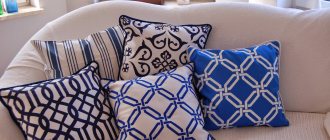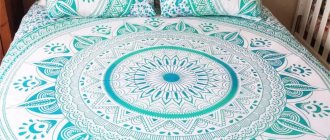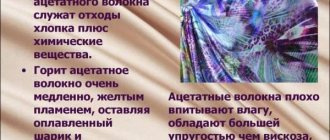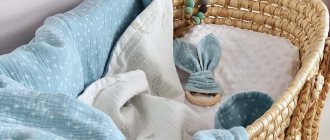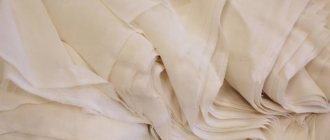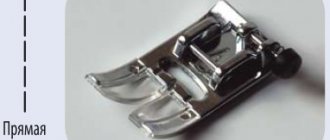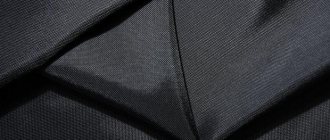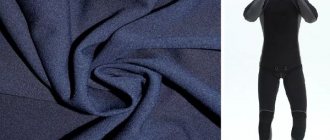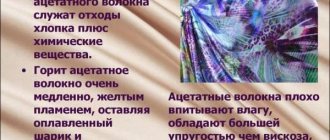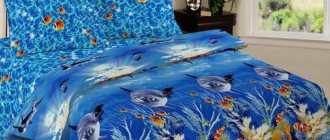Patchwork is not just sewing from beautiful leftover scraps. This is art. Choosing the right patchwork fabric makes all the difference. A small mistake can cost many hours of work. The product will become prickly, will gather in folds, and after washing will take on an irregular shape. To help beginning craftswomen, we publish a reminder and a list of materials that will definitely not let you down.
Patchwork: deciding on the fabric
Patchwork is a new word with an old meaning. More recently, it has come into use among handmade lovers. An English word, the translation of which can be literally interpreted as “patchwork”.
The original type of needlework is reminiscent of the principle of mosaic, when multi-colored textile scraps with a certain print (pattern) are sewn into a single integral fabric. Patchwork is a creative sewing process that allows you to recreate a product that is different from the original elements, with a new, creative and individual pattern and texture.
What fabrics are used for patchwork? A question that worries novice needlewomen. The answer will please you. The undeniable advantage of patchwork technology is the use of textiles of any kind. It doesn’t have to be a whole cloth, just purchased in a store; leftovers will do. Therefore, which fabric is better for patchwork will be determined by the author of the future exclusive product. Russian species are deservedly popular in stores.
Patchwork made from denim looks creative.
An excellent solution for old but beloved jeans will be the ability to be used as the main fabric for patchwork technology. Making bags using the patchwork method from jeans is not a new thing in handmade fashion circles; it is rather a trend that attracts with its exclusivity and practicality.
Jeans
Second most popular material. Jeans (denim) are dense, wear-resistant, great for creating a patchwork bag, bedspread, pillows, rugs, potholders and much more. Beginning needlewomen are also attracted by the fact that flaps can be cut from old jeans. It is important to consider that denim can be different: thick and thin, elastic and not. Denim patchwork involves the use of patches with the same characteristics.
Cotton is the leader of patchwork
Cotton fabric is considered the most convenient for this type of needlework because it:
- has optimal density;
- does not spread or crumble when cut;
- relatively weighty (light and heavy at the same time);
- easily takes the given shape and retains it for a long time;
- simply stitched;
- does not shed;
- does not shrink.
Straight weave threads in cotton fiber are the best choice for patchwork.
Cotton scraps look great in items such as:
- oven mitts;
- napkins;
- bedspreads for the sofa and bed;
- chair covers.
Patchwork made from strips of cotton fabric looks decent and will last a long time.
Questions and answers
Question: What fabrics are not suitable for patchwork?
Answer: Too dense, hard, elastic, crumbling when cut: satin, coat fabric, neoprene, brocade. This kind of material is incredibly difficult to work with. It requires high skill and the use of various tricks. Also, beginners should avoid crinkled fabric, pleated fabric, and fur.
Question: Where can I find inexpensive material for patchwork?
Answer: The cheapest way is to buy leftover fabrics in sewing stores. But be prepared to spend a lot of time searching for materials of the right color and quality.
Patchwork, quilting, or in our language “patchwork”, is an interesting, but difficult type of needlework. You can’t just take scraps of different fabrics and sew them together. The result will only be disappointing. Considering that patchwork is painstaking work, it will be doubly offensive. Fabrics must be selected carefully. It is best to use special ready-made kits (American or Japanese). If this is not possible, you should pay attention to cotton, linen or light denim. The flaps must be of the same density and match in color.
Silk - beautiful, but not practical
Read about: flax, lavsan and jute will protect the product
Silk scraps are a choice for the beauty of the product. Silk patchwork style products cannot be compared. They are beautiful and graceful, elegant and solemn, but... short-lived. If we are talking about kitchen curtains, which are often washed, then the service life of these products is quite short. Not every housewife will choose beauty over practicality.
Needlewomen choose silk fabrics if the goal is to create clothes. The artistic panel made from pieces also looks original. Japanese silk is not surpassed in patchwork technology, but it is an expensive pleasure. Japanese patchwork fabrics are suitable for those who love luxury.
Quality vs cost
In general, in short, the main technical characteristic that a patchwork maker should follow is density. This value shows how much a square meter of fabric weighs. The higher the digital value, the more threads are used in weaving, the stronger and more durable the fabric, the longer your product will last.
US cotton has a density of 150–160 g/sq.m., and Russian chintz has a density of 80–100 g/sq.m. The cost of American is 12–19 dollars per meter, calico is a little more than a dollar per meter. Nothing convinces more than dry numbers. And you decide for yourself what is more important to you at this stage - cost or quality.
Here's a funny video: ladies inexperienced in sewing entered an American cotton store. They themselves did not understand what kind of paradise they had entered. And we can be surprised: what diversity there is!
Linen for patchwork: an environmentally friendly choice
Absolutely natural raw materials are the basis for the production of linen. Interesting fact: it is linen threads that are used in surgery for suturing. The human body does not reject them and completely resolves them. That is why products made from linen are a godsend for those who suffer from hypersensitivity to plant allergens.
Sofa and bed covers, pillowcases, and napkins made from linen scraps will protect the body from various types of allergic reactions.
Linen is a valuable material with a number of advantages:
- natural, eco-friendly and absolutely clean textiles;
- has high thermal conductivity, which means that under such a patchwork blanket it will be warm, but not hot;
- It is resistant to wear and durable in use. Linen items will last a long time, remaining initially attractive;
- excellent air circulation. Pillowcases and curtains made from flax scraps will ensure freshness and breathability of the product;
- has a low degree of electrification. Linen patchwork clothing is an ideal choice in the summer.
The bacteriological properties of flax will protect the living space from fungi, bacteria and harmful microorganisms. By making panels, bedspreads, napkins or things from flax scraps, you can fill your home with a natural antiseptic.
How to choose fabric for work
Color and pattern
The nuances of selecting colored patches are as follows:
- Before starting work, the pieces of material are sorted by color and brightness (separately - light, dark). Then the possibility of combining them is checked.
- The basic rule: when forming a composition, light rags should be brought to the fore, in the center of the product, and darker ones should be used along its perimeter.
- Small patterns are better suited for creating geometric patterns and ornaments. The smaller the details in the mosaic, the smaller the print should be.
- It is not advisable to use fabrics with large patterns. It will not be visible after cutting the canvas into flaps.
When selecting product elements, it is recommended to take into account the rules of color combinations:
- color compatibility/incompatibility;
- the ability to combine black and white with any other shades.
To create a relief effect, it is recommended to shade dark fragments with white, and place bright ones on a dark background.
The main options for forming a pattern and combining individual fragments on the canvas are as follows:
- Squares - a simple principle (suitable for beginners) consisting of cutting fabric into equal square pieces, which need to be stitched together on a sewing machine in any order.
- Stripes - can be located in a straight line, diagonally, in a checkerboard pattern or in a zigzag.
- Isosceles triangles are a simple option. Suitable for a blanket, pillowcase or rug.
- Crazy patchwork is the most complex method, when patches are cut out in various shapes according to a pre-designed pattern, stitched, and decorative elements (buttons, beads, beads) are added on top.
- Sewing on a lining - a solid fabric of one color is used, onto which patches are placed on top and sewn according to the chosen pattern. The method is used to create complex patterns and subject compositions.
Product texture
The main rule when selecting scraps is that the density of the pieces of fabric should be almost the same, otherwise the product will wrinkle and look uneven.
The shape of the patches can be any, depending on the design (geometrically regular or free, the same for all pieces or different). The sewing stitch method is used to stitch the parts together.
Using the rules for selecting fabrics in patchwork, every needlewoman can create original works of decorative art that will decorate the interior.
Wool - warm and safe
You can use scraps of woolen fabric using the patchwork technique, provided that this product is more practical than aesthetic. Wool is a warm textile, which means its ideal range of use is blankets, bedspreads or elements of outerwear. Advantages of wool for making “patchwork” items:
- Doesn't wrinkle. This feature allows the wool blanket to have a constantly well-groomed, not wrinkled appearance.
- Poorly exposed to pollution. This means your wool patchwork rug will remain clean and attractive for a long time.
- The wool is elastic. The bedspread will ideally take the shape of your favorite sofa, protect from dirt, and warm you on cold winter evenings.
- Resistant to wear. A patchwork plaid can be passed down from generation to generation, especially if it is a family rarity.
- They have a high degree of moisture absorption.
- Does not burn.
Making a patchwork napkin from wool fabric is a versatile item in the kitchen. It will absorb steam and water, will not ignite upon contact with fire, and will last a long time.
Linen
Relatively inexpensive material. A huge advantage of flax is its high hygiene. It has no equal in thermal conductivity and breathability. This is a very strong, durable fabric. In patchwork, flax is used to make patchwork bed linen, summer clothes, and bags. A significant disadvantage is the wrinkleability of the fabric.
Drape for patchwork
Scraps of drape fabric are ideal for products whose mission is to “warm” and “warm”. Drape:
- does not fade, does not wrinkle, does not fade;
- has high wear resistance;
- windproof, wrinkle-resistant and warm.
Thickened fills the product with warmth. Drape is an excellent choice for patchwork technology if the goal is to make a warm blanket, rug or bedspread.
Patchwork basics. Part 1: history, materials, tools
Not every one of you has probably heard of, much less is familiar with, the patchwork technique!
In this article we will try to figure out what it is, and we will also try to expand your creative horizons!
So, let's speculate!
Decorating the interior of your home in an original way while spending very little money is the dream of every housewife. Let's remember the patchwork technique (you've probably heard this term). Patchwork - this is patchwork - a difficult and very interesting type of needlework, known since ancient times.
No one can say for sure when a person decided to make a new product from scraps. What was it? Baby blanket? Curtain for the kitchen? One thing is certain - this product was made with love, warmth and care for loved ones. Have you always wanted to create something with your own hands from bright scraps and use it to your advantage? With patchwork patterns, taking your first steps into the wonderful world of patchwork is as easy as shelling pears!
So, patchwork (from the English “patch” - patch, “work” - occupation, work) is a technique of patchwork needlework (which was so well known to our grandmothers and great-grandmothers), where, according to the mosaic principle, a whole product is sewn together from multi-colored pieces of fabric with a certain pattern.
The history of patchwork dates back to ancient times. For example, in one of the museums in Cairo, an ornament made from pieces of gazelle skin is displayed. The item dates back to approximately 980 BC. The Tokyo Costume Museum houses clothing from the 16th century, decorated with patterns made from pieces of various fabrics. In the 4th-9th centuries AD, pilgrims came to the temple and left their pieces of clothing. From these numerous pieces a carpet was made, which was reminiscent of the pilgrimage of many people. And the London Quilt Museum houses magnificent items made by the wives of the first settlers. Very popular in the East, patchwork came to Europe, probably after the Crusades, when knights brought carpets, banners, and flags made using this technique. But still, the main traditions originated among the American settlers. It was fashionable to copy traditional patterns, as well as the shapes and colors of quilts.
The patchwork technique as an independent type of decorative art was developed in England in the 18th century with the advent of wonderful Indian fabrics there. However, patchwork was developed among many peoples. In times of crisis, this technique made it possible to recycle unnecessary scraps and scraps of fabric into things necessary for household use. Many of us can remember childhood impressions of our grandmother's funny shaggy rugs.
The patchwork style is not forgotten today. Using this technique, you can make almost everything - from bed linen to panels, children's toys, timeless flowers and fashionable designer clothes.
Currently, separate exhibitions are dedicated to patchwork, clubs and schools are being created to teach this technique. Today for many it is a hobby, and some make money from this art. Traditional patterns are modified, modified or created anew. If you want to seriously engage in this wonderful handicraft, then you need two qualities: patience and perseverance, and, of course, desire. Mastery only comes with experience, so don’t be discouraged if there are uneven lines and stitches. Be patient and you will succeed.
Where to begin?
Paradoxically, it is best to master the patchwork technique by making large items. And if your patchwork guide tells you to start with some kind of pot holder, then it's better to start with a traditional quilt or bedspread. There are several reasons for this:
Firstly, this is a result that will amaze your family and friends with its size and beauty.
Secondly, it is best to master this technique on a large product, working with large pieces of fabric.
Third, it will take you no more time to make a large blanket than it will take you to assemble a patchwork mosaic for a pot holder.
Accessories and materials needed for needlework
We will need sewing supplies that every self-respecting seamstress has. We will provide an almost complete list. There is something you must have, something you can easily do without.
- Chalk, soap, disappearing marker, washable marker or a special quilting pencil. Everyone uses what is convenient for them.
- Tailor's measuring tape and ruler. When purchasing a ruler, check its divisions with the markings on the soft meter. Sometimes they may differ. It is better to choose a transparent ruler, without nicks or burrs.
- Scissors and seam ripper. It is worth having large scissors for basic work and small ones for jewelry operations. A seam ripper is good for getting rid of bad seams. It usually comes with a sewing machine.
- Roller knife and mat for it. It is convenient to cut out large and long pieces on the mat with a knife. The mat is self-healing. But you shouldn’t hold a knife over the same place - after all, it won’t last forever.
- Sewing machine - everything here is clear without words. It is worth purchasing a quilting foot separately for the machine in order to make better quality seams. There are even special machines for patchwork - they do not wrinkle the padding polyester when quilting the product. But they are needed by those who do patchwork professionally.
- Iron. All seams need to be smoothed to ensure the finished piece looks perfect.
- Needles. You will need both machine and hand needles. Hand sewing needles are needed for basting parts and for fine stitching. They should be long and sharp. Don't forget the thimble.
- Pins. Buy tailor's pins and safety pins that can be used to secure multiple layers of fabric.
- Threads. They must be durable and of high quality, in different colors and thicknesses.
- Stencil, tracing paper, carbon paper and graph paper. Using tracing paper or carbon paper, you can transfer the design you like onto graph paper. Sometimes a stencil is needed when details on one product are repeated. Be sure to label it and put it together with the other stencils used for this piece into one file.
- You also need to have a set of cushioning fabrics - burlap, padding polyester, batting, interlining, foam rubber.
- Lining fabric - thick canvas (for panels and rugs), silk satin type (for decorative pillows).
- For decoration you will need a lot of decorative braid, ribbons, soutache and buttons.
One of the main parts are templates .
Templates for a product are the same as patterns for cutting clothes. Making a patchwork product begins with cutting out templates: templates can be different: square, triangular, diamond-shaped. Since the templates will probably be used more than once, they are made from durable materials (for example, cardboard).
The template is made like this: the desired contour of the template is drawn on cardboard without seam allowances, then a few millimeters are added to the allowance and a second contour is drawn.
Patchwork materials
Are you already impatient to start creating? Let's get started!
The very first question is where to get material for patchwork? If you are a master of sewing, knitting, or embroidering, then you have probably accumulated a large number of scraps and scraps over time. They can become your first blanks for patchwork-style products. If your great desire to create something unique and simply fabulous coincides with your equally great capabilities, then fabric scraps for patchwork can be bought in a specialized craft store or ordered online. Colorful, with delightful ornaments, and even with real plot pictures, special blanks for patchwork will look incredibly beautiful in your products!
- you can use fabric pieces either new or used. We recommend steaming or washing scraps of new fabric to produce the desired shrinkage and eliminate possible loss of color;
- if the fabric flaps you use are not from new fabric, it is recommended to pre-starch them a little and iron them properly;
- Cotton fabrics are considered the easiest to work with - they hold their shape and are easy to sew. Cotton scraps make excellent napkins, potholders and teapot warmers, capes and pillows for chairs, armchairs and sofas;
- dense fabrics such as gabardine, tweed and drape are used for products such as rugs, panels and rugs;
- silk scraps after preliminary starching are also convenient for use in patchwork, like cotton ones, however, it should be remembered that finished products from silk pieces are impractical, since thin silk tends to wear out quickly;
- Some products require a combination of patches of several textures during manufacture (for example, in potholders, one side may be denser than the other), but if this is not required, it is better to take patchwork of the same texture for patchwork; If the product will be subject to significant loads (rugs, chair seats), we recommend pre-setting the flaps on a lining. What can serve as a lining? These can be pieces of thick fabric, padding polyester or batting;
- a beautiful decorative effect is obtained by finishing the seams with braid, cord or ribbon, while the entire composition acquires a single “sound”;
- When working with scraps, you will most likely use elements that are the same size and shape. Please note - the more carefully you cut out your blanks, the more accurate the finished product will be. How to ensure that all fragments are perfectly identical? Templates will help you with this - special layouts made of cardboard or thick paper. Our recommendation: when making a template, include a seam allowance of approximately 0.75 centimeters in it, then you will not have to particularly trim the edges of the blanks when sewing the elements;
- Let's say you need squares for a patchwork-style product. Draw a square of the desired size on a sheet of cardboard, excluding seam additives. Then step back the required 0.75 centimeters from the edge and outline a larger square, already with a seam allowance. Now the template can be cut out - you should get a kind of frame. Place it on the fabric and trace the outer and inner sides of the frame, after which you need to cut out the resulting square along the outer edge and sew it together, focusing on the inner one;
- As a rule, flaps made of dense fabrics with seam allowances are not cut out, since then they begin to bulge unsightly at the joints. What to do in this case? Be sure to use a lining on which the flaps are sewn - end-to-end, without allowances. Each flap is sewn along the edge with a regular stitch, then the edges of adjacent flaps are joined together with a wide zigzag seam.
There are no laws in patchwork, no conditions, no restrictions on the selection of fabrics and related materials.
Patchwork is the ability to select fabrics for one product by type, structure, color, size and pattern so as to obtain a picture according to the sketch. What fabrics can be used?
- chintz. It's the easiest to work with. It is pleasant to the touch with a wide range of colors and beautiful prints;
- denim. It comes in different colors - from soft pink to dark blue. Denim looks beautiful with tartan, chintz, braid, cambric;
- drape is a fabric that is soft to the touch, so it will fit well on the tapestry; it can be decorated with embroidery, lace, piping, braid;
- organza, crystalline or chiffon, applied to another fabric, transforms it, giving it a new shade and texture;
- natural and artificial silks, crepe satins, spatula, crepe de Chine and wool are also used. However, working with them requires certain skills. To prevent the fabric from fraying, craftswomen glue it from the inside with non-woven material;
- in patchwork, taffeta with velvet and moire looks beautiful. But, like silk, they also need to be glued from the inside out. In addition, when cutting, pay attention to the direction of the pile.
Patchwork patterns and techniques
Patchwork patterns depend on you and your imagination. Today, along with traditional patchwork techniques, there is also a technique called crazy patchwork .
Crazy patchwork or crazy patchwork is one of the ancient needlework techniques that appeared along with traditional patchwork. But unlike the traditional technique, which requires a clear sequence and forms, crazy patchwork allows you to sew on patches of various shapes and colors in any order. In this patchwork, beads, buttons, ribbons, lace, and floss threads are used for decoration.
In addition, the techniques include knitted (knitted or crocheted) patchwork, children's patchwork, and patchwork appliqués.
Here are some patchwork patterns:
"Mill" pattern
Saw teeth pattern
Where can we use patchwork?
Yes, almost everywhere! Blankets, bed linen, sofa pillows, panels for wall decoration, small rugs, original curtains, rainbow napkins and even furniture... By the way, if you wish, you can decorate one or more walls in the room in this style. It is not difficult. You just need to find a few rolls of wallpaper, think over the pattern and stick the cut out pieces in a certain order. Patchwork is a lot of fun. This activity develops the imagination and allows you to realize your fantasies, especially since the scope for experiments is unlimited, because the scraps can be folded into thousands of designs and ornaments. It is also important that your experiments will not require large financial expenditures. In addition, books and magazines with patterns and step-by-step instructions will help in mastering this wonderful art.
Well, that’s probably all the most basic things you should know about patchwork! In the next part we will share with you useful tips and secrets of this type of needlework and technique. Thank you for your attention to our publication! We really hope that you found it useful and interesting!
Happy experiments, dear needlewomen!
Combination of materials
For those with creative ideas, creative fantasies and an approach to creating exclusive products using the “patchwork” technology, it will be interesting to use the following sewing approach - a combination of different types of fabrics in one fabric. There are no restrictions on combining colors, textures and types of textiles. As they say, everything is in the hands of the creator.
Things that combine such scraps of fabrics as denim and corduroy, wool and linen, velvet and silk look extraordinary.
Pre-treatment of fabric before cutting
Any fabric that contains natural raw materials - cotton, linen, wool, silk - always shrinks (from 3 to 6%) and must be decated before cutting. Decatting is a wet-heat treatment of textiles to eliminate shrinkage.
I always wash cotton and linen, soak it in fairly hot water, and let it sit. Almost without twisting, I hang it on a thick stick (forget about the clothesline - nothing can iron out the creases after it). And I take the almost dry fabric to the ironing board. Moreover, I do the same with American cotton, which, they say, can be simply steamed.
When washing, there is a check for shedding and rinsing of any sizing substances with which the fabric is impregnated in production to give it a marketable appearance. Other sections had to be rinsed 3-4 times until the soap suds stopped coming out. Some things used to bleed paint. Usually black, red, blue linens. I add vinegar and then rinse until clear water.
I do not claim to be the ultimate truth. This is my experience and my observations. I will be glad if they are useful to you. Patchwork magic!
Use Cases
The patchwork technique involves the use of various approaches to form a patchwork product.
- Fabric fabric assembled from individual shreds. And it doesn’t matter whether they are the same shape or different. The shape can be both geometrically correct and free.
- The textile has a holistic appearance, and the pattern is created not by sewing together individual pieces, but by using a sewing stitch.
- The product is created according to the type of applique, when the main canvas is decorated with elements from the general applique.
What is patchwork
This type of handicraft is based on making a whole product from pieces of fabric, similar to the mosaic technique. From small scraps you can sew not only decorative decorations for the interior (wall panels, napkins, rugs and even dolls), but also useful things - bedding, tablecloths, pillows, bags.
The patchwork technique originated several centuries ago in poor families, where women had to save money due to the high cost of fabrics. The pieces were used to make blankets, floor mats, tablecloths, etc. Gradually, this type of needlework gained popularity among representatives of other segments of the population.
Modern quilting is both an art and a fun activity. It requires a harmonious selection of individual parts of the shreds in size, shape, and shades. Patchwork attracts handmade lovers with its accessibility and the ability to use unnecessary things to create handicraft masterpieces. However, such an activity requires patience, perseverance and the ability to create a beautiful design from scraps. Using a creative approach to selecting and combining multi-colored pieces of fabric, you can create entire pictures.
There is practically no need to spend money on such a hobby. Products sewn from pieces can not only be used in everyday life, but also displayed at exhibitions. Many craftswomen have turned this hobby into a way to earn extra money.
Patchwork bedspread.
The main postulate of technology
The basis of the technique is the creation of a canvas from shreds, identical in shape and size, but different in type of cloth. A product that shows the integrity of the design and the symmetry of the figures looks ideal.
Fabric for the “flowers” patchwork allows you to make wonderful curtains that will turn a summer veranda into a whole botanical garden, and with the “children” print it will easily fit into the interior of a child’s bedroom and harmoniously complement the interior of the child’s room.
On a note
You can successfully use leftover curtain fabric to sew a patchwork quilt.
When combining dissimilar shreds with each other, it is necessary to ensure that the density of the selected textile is at its peak values. This means that they should be approximately identical in density. Do not forget about the “closeness” of shades and patterns. It is better to take advantage of the taste of professional manufacturers and purchase a ready-made set of different types of fabrics for patchwork.
© 2021 textiletrend.ru
Patchwork fabrics: user ratings
The quilters, who create their masterpieces mainly from cotton fabrics, have their own classification - according to the country of origin. It is not at all scientific, but it easily allows us to navigate the cotton world.
The main participants in this battle: USA, Japan, Korea, Germany, China, Poland, Russia.
- American cotton and Japanese cotton are the absolute favorites of all quilters. Beautiful colors and designs that a huge industry is working on, high density, strength and softness, virtually no shrinkage, wrinkle-resistance, non-flowing cut - for this, quilters are ready to forgive American cotton for its high cost, as well as the width of the roll of 110 cm.
- Japanese fabrics have a special texture, specific colors in natural shades and are popular with those craftsmen who prefer traditional Japanese patchwork - with completely manual assembly, stitching and appliqué.
- Korean and German fabrics are also of excellent quality. Maybe they are a little thinner and don’t have the wealth of designer collections that US textiles have.
- Chinese fabrics are thin and simple in color. But the wise Chinese have learned to cut ready-made sets, copying American pre-cuts, and are selling their goods on Aliexpress with all their might.
- Polish cotton has flooded the market in the post-Soviet space. It is durable, but also quite thin. Suitable only for sewing children's textiles, since all prints have a pronounced “children's” theme.
- It is customary to scold domestic fabrics, complaining about the decline of the Russian light industry, the paucity of design solutions, and low quality. Professional quilters do not sew with them and encourage others not to sew. But for an amateur, and even more so for a beginner, it’s possible! After all, Russian calico calico is very cheap, and it’s not so scary to screw something up. And sometimes the prints are very beautiful.
Don't waste your time on these fabrics
Not all fabrics are suitable for patchwork; first of all, you should avoid those that shrink when washed and fade. Time spent on making things from such materials can be considered wasted. In addition, you should not choose the following types of paintings:
- elastic materials;
- fabrics with a rigid shape;
- corrugated and pleated;
- fabrics with metallized threads.
It will also be inconvenient for novice craftswomen to work with fur; it is rarely included in patchwork compositions.
Professional craftsmen make truly unique things from fur
